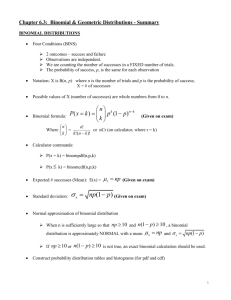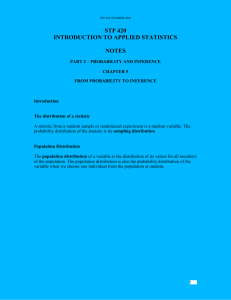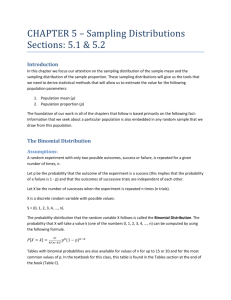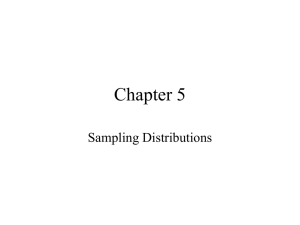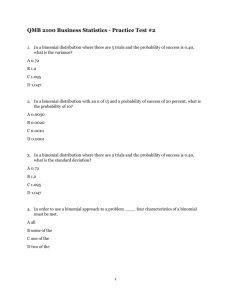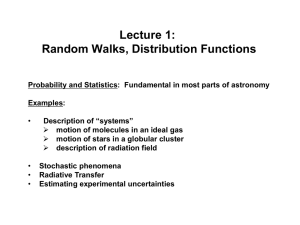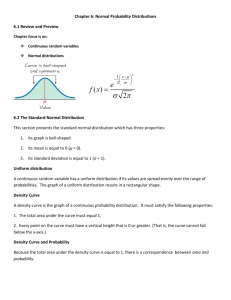Chapter 5: Sampling Distributions
advertisement
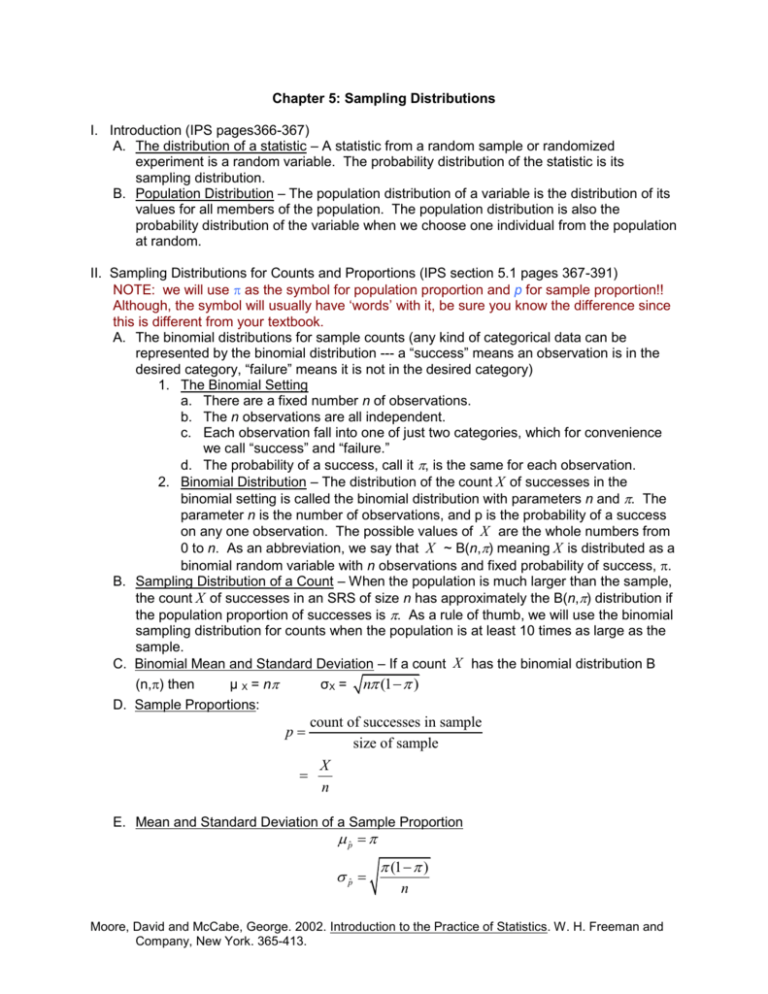
Chapter 5: Sampling Distributions I. Introduction (IPS pages366-367) A. The distribution of a statistic – A statistic from a random sample or randomized experiment is a random variable. The probability distribution of the statistic is its sampling distribution. B. Population Distribution – The population distribution of a variable is the distribution of its values for all members of the population. The population distribution is also the probability distribution of the variable when we choose one individual from the population at random. II. Sampling Distributions for Counts and Proportions (IPS section 5.1 pages 367-391) NOTE: we will use as the symbol for population proportion and p for sample proportion!! Although, the symbol will usually have ‘words’ with it, be sure you know the difference since this is different from your textbook. A. The binomial distributions for sample counts (any kind of categorical data can be represented by the binomial distribution --- a “success” means an observation is in the desired category, “failure” means it is not in the desired category) 1. The Binomial Setting a. There are a fixed number n of observations. b. The n observations are all independent. c. Each observation fall into one of just two categories, which for convenience we call “success” and “failure.” d. The probability of a success, call it , is the same for each observation. 2. Binomial Distribution – The distribution of the count X of successes in the binomial setting is called the binomial distribution with parameters n and . The parameter n is the number of observations, and p is the probability of a success on any one observation. The possible values of X are the whole numbers from 0 to n. As an abbreviation, we say that X ~ B(n,) meaning X is distributed as a binomial random variable with n observations and fixed probability of success, . B. Sampling Distribution of a Count – When the population is much larger than the sample, the count X of successes in an SRS of size n has approximately the B(n,) distribution if the population proportion of successes is . As a rule of thumb, we will use the binomial sampling distribution for counts when the population is at least 10 times as large as the sample. C. Binomial Mean and Standard Deviation – If a count X has the binomial distribution B (n,) then μ X = n σX = n (1 ) D. Sample Proportions: count of successes in sample size of sample X n p E. Mean and Standard Deviation of a Sample Proportion pˆ pˆ (1 ) n Moore, David and McCabe, George. 2002. Introduction to the Practice of Statistics. W. H. Freeman and Company, New York. 365-413. F. Normal Approximation for Counts and Proportions – Draw a SRS of size N from a large population having population proportion of successes. Let X be the count of successes in the sample and p X / n the sample proportion of successes. When n is large, the sampling distributions of these statistics are approximately normal: X is approximately N (n , n (1 ) ( p is approximately N , (1 ) n ) As a rule of thumb, we will use this approximation for values of n and that satisfy n ≥ 10 and n(1-) ≥ 10. III. The Sampling Distribution of a Sample Mean (IPS section 5.2 pages 391-413) A. Mean and Standard Deviation of a Sample Mean – Let X be the mean of an SRS of size n from a population having mean and standard deviation . The mean and standard deviation of X are X X n B. Sampling Distribution of a Sample Mean – If a population has the N , X2 distribution. C. Central Limit Theorem – Draw a SRS of size n from any population with mean and finite standard deviation . When n is large, the sampling distribution of the sample mean x is approximately normal: σ 2X X is approximately N μ X , n FIGURE 5.10 The central limit theorem in action: the distribution of sample means from a strongly nonnormal population becomes more normal as the sample size increases. (a) The distribution of 1 observation. (b) The distribution of x for 2 observations. (c) The distribution of x for 10 observations. (d) The distribution of x for 25 observations. Moore, David and McCabe, George. 2002. Introduction to the Practice of Statistics. W. H. Freeman and Company, New York. 365-413.
